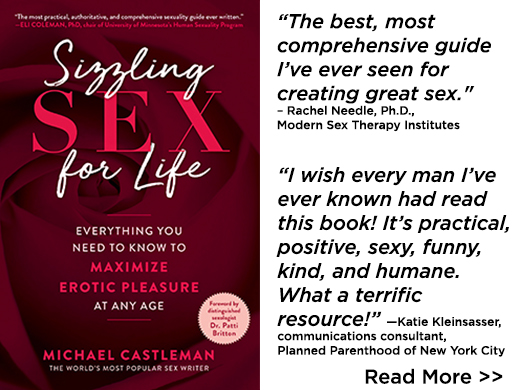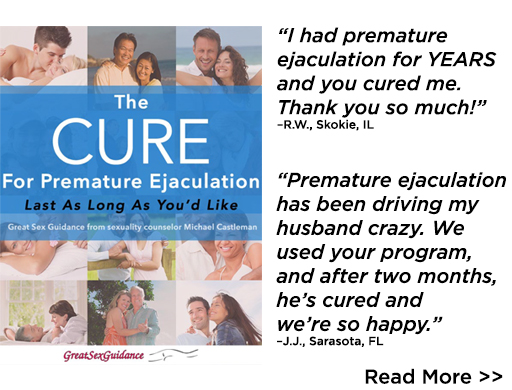
No one knows how many men develop ED. But the proportion keeps growing. Two decades after the Food and Drug Administration approved Viagra, it’s still anybody’s guess how many men have erectile dysfunction (ED). Definitions vary. Many men are reluctant to admit the problem. Erection loss happens in different ways, sometimes quickly, usually slowly. And the studies are all over the map. Some suggest a low prevalence of ED, while others show that it’s quite common.
Can we make any sense of all the confusion?
Yes—if we approach the research historically.
Let’s begin with two highly regarded, often-cited surveys by researchers at the University of Chicago’s National Opinion Research Center. In 1992, they asked a representative sample of 1,410 men age 18 to 59 if they suffered erection trouble, and in 2006, they asked another representative group of 1,455 older men age 57 to 85:
Age when interviewed (both studies)…Men admitting any ED
18-29…7%
30-39…9%
40-49…11%
50-59…18%
57-64…31%
65-74…43%
75-85…45%
ED is age-related, so we would expect increasing incidence with rising age. The two studies’ combined results clearly show this.
Now consider the two bold-face rows in the middle of the chart—men 50 to 59, the oldest men in the 1992 survey, and those 57 to 64, the youngest in the 2006 report. Among the former, 18 percent admitted erection difficulties, among the latter, substantially more, 31 percent. What could account for such a large difference?
The two groups’ age ranges are not identical. Perhaps there’s a low incidence of ED during men’s early fifties followed by a big leap during their late fifties and early sixties. This explanation is tempting. ED is age-related, so we’d expect a higher rate in the group that skews older.
But the two groups overlap in age, and compared with the younger men (50-59), their older brethren (57-64) show an ED risk that’s 72 percent greater, quite a spike. ED may develop suddenly in men treated for prostate cancer, or among those who take opioid drugs, antidepressants, or other medications. But men who develop ED suddenly represent only a small fraction of the middle-aged male population. In most men, ED develops gradually—a few years of occasional iffy erections, then a period of more frequent balkiness, until finally, men have consistent, undeniable difficulties. So it’s hard to believe that sudden erection loss would account for the large leap in ED documented in these two studies.
Another explanation makes more sense, the studies’ timing in relation to the introduction of Viagra. The men in the younger group were interviewed in 1992, six years before Viagra’s 1998 approval, a time when ED, then known as “impotence,” was stigmatized, largely not discussed, and rarely admitted. Those in the older group were interviewed in 2006, eight years after Viagra when ED was more widely discussed, less embarrassing, and somewhat more likely to be admitted.
Another study supports the notion that in the years since Viagra’s appearance, men have become more willing to admit ED. In 2002, Australian researchers launched the Florey Adelaide Male Aging Study (FAMAS). Its participants, several hundred men age 65 to 85, have been interviewed repeatedly over many years, most recently in 2011, 14 years post-Viagra. In addition, unlike the men in the two Chicago studies who were surveyed just once, the Australian men talked with the FAMAS research team many times. Repeat interviews increase subjects’ familiarity and comfort, and presumably their willingness to admit what might otherwise have remained unmentionable. Several years and many interviews into the FAMAS, the researchers asked their participants about ED:
Men admitting ED… Percentage
Any ED…91%
Mild chronic ED…54%
Moderate to severe ED…37%
In the Chicago study, among men 65 to 85, an average of 44 percent admitted ED. In the Australian study, in the same age group, the average was 61 percent.
Which results are more believable? I go with the Australian findings. The FAMAS interviews took place long after Viagra’s approval, so it’s reasonable to suppose that the subjects felt more comfortable admitting ED. In addition, the Australian researchers bided their time before asking about ED. By the time they did, the study participants felt comfortable with them and more willing than the Chicago studies subjects to open up.
Older men’s actual rate of ED is probably higher than the Australian findings. Even twenty years after Viagra’s approval and talking with investigators with whom they felt comfortable, I bet some FAMAS participants still didn’t admit it or understated their ED severity.
But even if we accept the Australian findings as gospel, almost all men over 65 have some ED with more than one-third suffering chronic, moderate-to-severe problems.
I hasten to add that when I’ve blogged about this issue previously, a smattering of men over 65 have insisted that they were still able to raise firm erections without drugs. I don’t doubt them, but they appear to be outliers. In the Australian study, 9 percent of the men over 65 reported no ED ever. So it’s possible to have firm erections while cashing Social Security checks. But it also seems safe to say that by 60—and often years earlier—most men suffer some degree of erection impairment.
This may feel tragic to men who believe that lovemaking is all about penis-vagina intercourse. Even with Viagra and its companion medications, this may no longer be possible. But for men who jettison it’s-all-about-intercourse sex in favor of the many other ways to play—hand jobs, oral, toys, and perhaps some kink—great sex and marvelous orgasms are still possible. Men don’t need erections to have orgasms. For more on this, read my article, Great Sex Without Intercourse.
And as calendar pages continue to turn, as increasing numbers of older men discover the joys of sex without intercourse, it’s a good bet that they will become increasingly comfortable admitting ED—and the figures may go even higher.
References:
The University of Chicago studies:
For ages 18-59: Laumann, E.O. et al. “Sexual Dysfunction in the United States: Prevalence and Predictors,” Journal of the American Medical Association (1999) 281:537.
For ages 57-85: Laumann, E.O. et al. “Sexual Dysfunction Among Older Adults: Prevalence and Risk Factors from a Nationally Representative U.S. Probability Sample of Men and Women 57-85 Years of Age,” Journal of Sexual Medicine (2008) 5:2300.
The Australian study
Martin, S. et al. “Clinical and Biopsychosocial Determinants of Sexual Dysfunction in Middle-Aged and Older Australian Men,” Journal of Sexual Medicine (2012) 9:2093.





